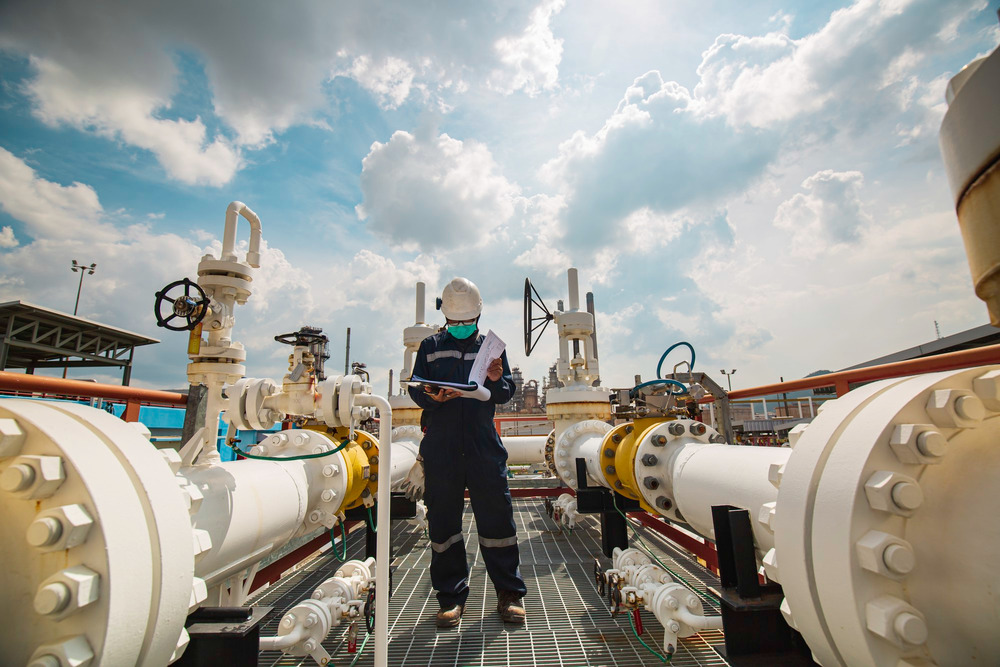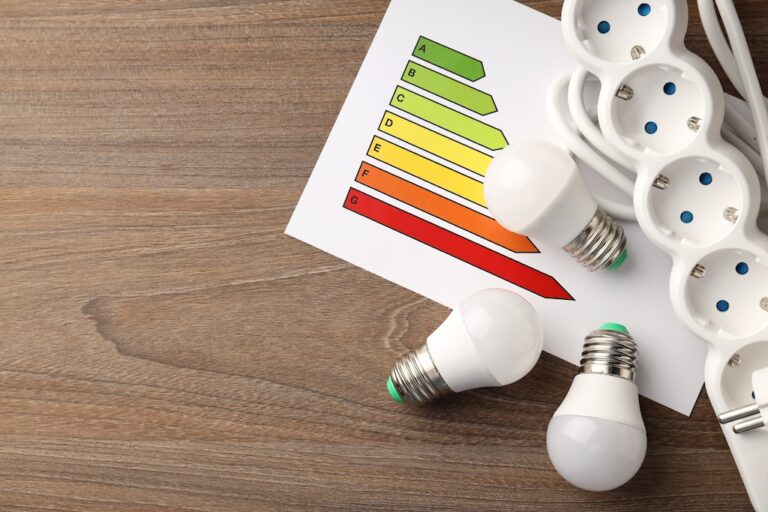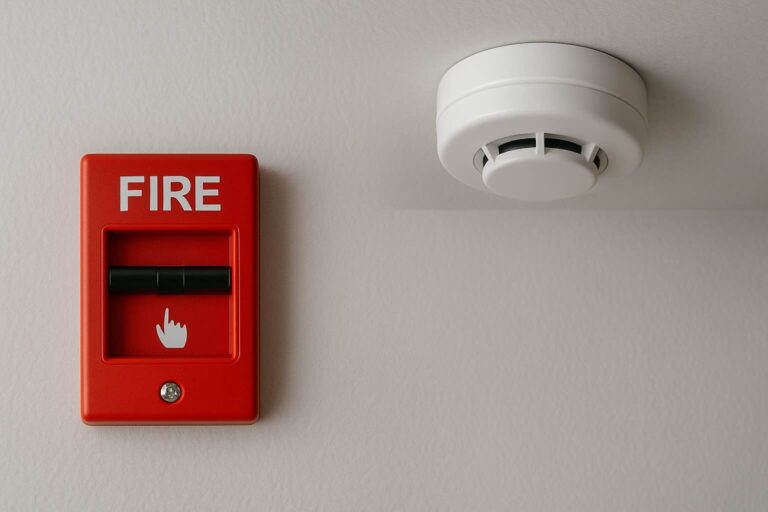What is Energy Efficiency? Adatech Energy Efficiency Solutions
In today’s world, energy efficiency has become one of the most crucial elements for a sustainable future. The rapid depletion...
Devamını Oku

Cathodic protection is an advanced electrochemical method used to prevent corrosion in metal structures. Corrosion occurs when metal surfaces react with environmental factors such as water, oxygen, and soil, leading to structural degradation. This method is widely applied to pipelines, marine structures, storage tanks, and industrial facilities to extend their lifespan and maintain safety.
The system works by making the protected metal structure the cathode of an electrochemical cell, ensuring that oxidation does not occur. There are two primary types of cathodic protection: external current-induced cathodic protection and galvanic cathodic protection. These techniques help prevent corrosion by either supplying a controlled electrical current or using sacrificial anodes.
Where is cathodic protection used? It is commonly applied in oil and natural gas pipelines, the maritime sector, industrial infrastructure, and various underground and underwater metal structures. The benefits include long-term protection, reduced maintenance costs, and improved structural integrity.

Cathodic protection is an electrochemical technique used to protect metal structures from corrosion. Corrosion occurs when metal surfaces react with environmental elements such as moisture, oxygen, and soil, leading to structural degradation. Cathodic protection systems prevent this by supplying electrons to the metal surface, effectively stopping the oxidation process.
This method is widely used in environments where metals are exposed to corrosive conditions, such as underground pipelines, marine structures, and industrial facilities. Cathodic protection systems operate by making the metal structure the cathode of an electrochemical cell, ensuring that it remains intact while a sacrificial material corrodes instead.
There are two main types of cathodic protection: external current-induced cathodic protection and galvanic cathodic protection. Each method has its advantages and is applied based on the structure’s needs and environmental conditions.
Now, let’s explore how cathodic protection is done in detail.
The process of cathodic protection involves the controlled application of electrical current to prevent the oxidation of metal surfaces. It is implemented using two primary techniques:
Regular monitoring and cathodic protection measuring devices are used to ensure the system operates efficiently.
Next, let’s explore the areas where cathodic protection is used.
Cathodic protection systems are utilized across multiple industries to safeguard metal structures from corrosion. Some of the key sectors where cathodic protection is used include:
Pipelines transporting oil and gas are often buried underground or submerged underwater, making them susceptible to corrosion. Cathodic protection systems are installed to prevent pipeline failures, leaks, and costly repairs. External current-induced cathodic protection is commonly applied in these settings to maintain the structural integrity of the pipelines over extended periods.

Marine environments accelerate corrosion due to high salt concentrations. Cathodic protection is essential for:
Galvanic cathodic protection is widely used in marine structures, where sacrificial anodes protect against seawater-induced corrosion.
Large industrial plants, refineries, and chemical facilities implement cathodic protection systems to prevent structural failures. Additionally, bridges, dams, tunnels, and underground storage tanks benefit from cathodic protection materials to ensure durability and longevity.
Now, let’s discuss the types of cathodic protection in more detail.
This system relies on an external power source to apply a protective electrical current to metal structures. Cathodic protection measuring devices ensure proper voltage levels are maintained. It is highly effective for extensive infrastructure projects where natural galvanic action is insufficient.
This method involves attaching a sacrificial anode (such as zinc, magnesium, or aluminum) to the protected structure. These anodes degrade over time, requiring periodic replacement. It is a low-maintenance solution used in smaller-scale applications.
Monitoring these systems requires specialized cathodic protection measuring devices to ensure ongoing efficiency. Let’s now discuss how cathodic protection is measured.
Ensuring the effectiveness of a cathodic protection system involves regular measurement and monitoring. Key methods include:
With these measurements, adjustments can be made to optimize the cathodic protection system for long-term durability.
Next, let’s examine the advantages of cathodic protection systems.
Using cathodic protection offers numerous benefits across various industries:
Now, let’s explore how cathodic protection systems are installed and maintained.
By following these steps, cathodic protection systems can function effectively for many years, safeguarding vital infrastructure.

In today’s world, energy efficiency has become one of the most crucial elements for a sustainable future. The rapid depletion...
Devamını Oku
Lightning is a natural phenomenon that poses serious risks to buildings, electrical systems, and human safety. A single lightning strike...
Devamını Oku
Fire detection systems are vital safety solutions that help detect signs of fire at an early stage in buildings and...
Devamını OkuPROTECTION OF PERSONAL DATA
WEBSITE COOKIE POLICY
Your personal data; It is one of the leading principles of our Organization to protect the privacy of visitors to the website (www.adatech.com.tr) operated by ADATECH as the data controller. This Cookie Usage Policy (“Policy”) explains to all our website visitors and users which types of cookies are used and under what conditions.
Cookies are small text files stored on your device or network server by websites you visit on your computer or mobile device.
They are generally used to provide you with a personalized experience during your use of the website you visit, to improve the services offered and to improve your experience, and may contribute to ease of use while browsing a website. If you do not prefer the use of Cookies, you can delete or block Cookies in your browser settings. However, we would like to remind you that this may affect your use of our website. Unless you change your cookie settings in your browser, we will assume that you accept the use of cookies on this website.
1. WHAT KIND OF DATA IS PROCESSED IN COOKIES?
Cookies on websites, depending on their type, collect data about your browsing and usage preferences on the device you visit the site. This data includes information about the pages you access, the services and products you review, your preferred language option and other preferences.
2. WHAT is a solution and what are its intended uses?
Cookies are small text files that are stored on your device or network server through browsers by websites you visit. These small text files, which contain your preferred language and other settings on the site, help us remember your preferences the next time you visit the site and make improvements to our services to improve your experience on the site. Thus, you can have a better and personalized usage experience on your next visit.
The main purposes of using cookies on our Website are listed below:
3.TYPES OF COOKIES USED ON OUR WEBSITE
3.1. Oturum Çerezleri
Session cookies ensure that the website functions properly during your visit. They are used for purposes such as ensuring the security and continuity of our sites and you during your visit. Session cookies are temporary cookies, they are deleted when you close your browser and come to our site again, they are not permanent.
3.2. Persistent Cookies
These types of cookies are used to remember your preferences and are stored on your device via browsers. Persistent cookies remain stored even after you close your browser or restart your computer from which you visited our site. These cookies are kept in subfolders of your browser until they are deleted through your browser’s settings.
Some types of persistent cookies may be used to provide you with special suggestions, taking into account issues such as your purpose of using the Website.
Thanks to persistent cookies, if you visit our Website again with the same device, it is checked whether there is a cookie created by our Website on your device and if there is, it is understood that you have visited the site before and the content to be transmitted to you is determined accordingly and thus a better service is provided to you.
3.3. Mandatory/Technical Cookies
These cookies are essential for the website you visit to function properly. The purpose of such cookies is to provide necessary services by enabling the website to function. For example, it allows you to access secure parts of the website, to use its features, to navigate on it.
3.4. Analytical Cookies
They collect information about the way the website is used, the frequency and number of visits, and show how visitors navigate to the site. The purpose of using such cookies is to increase performance by improving the way the site functions and to determine the general trend direction. They do not contain data that could enable the identification of visitors. For example, they show the number of error messages displayed or the most visited pages.
3.5. Functional/Functional Cookies
It saves the choices made by the visitor within the site and remembers them on the next visit. The purpose of such cookies is to provide ease of use to visitors. For example, it prevents the site user from re-entering the user password on each page they visit.
3.6. Targeting/Advertising Cookies
They enable the measurement of the effectiveness of advertisements served to visitors and the calculation of the number of times the advertisements are viewed. The purpose of such cookies is to serve ads customized to the interests of visitors.
Likewise, they enable the detection of visitors’ interests specific to their browsing and the presentation of appropriate content. For example, it prevents the advertisement shown to the visitor from being shown again in a short time.
4. HOW TO MANAGE COOKIE PREFERENCES?
To change your preferences regarding the use of cookies or to block or delete cookies, simply change your browser settings.
Many browsers give you the option to accept or reject cookies, accept only certain types of cookies, or be alerted by the browser when a website requests to store cookies on your device so that you can control cookies.
It is also possible to delete cookies previously saved in your browser.
If you disable or refuse cookies, you may need to set some preferences manually, some features and services on the website may not function properly as we will not be able to recognize and associate your account. You can change the settings of your browser by clicking on the relevant link from the table below.
5. ENFORCEMENT OF WEBSITE PRIVACY POLICY
Website Privacy Policy …./…./…./…. . is dated. In case all or certain articles of the Policy are renewed, the effective date of the Policy will be updated. The Privacy Policy is published on the website of the Authority (www.adatech.com.tr) and made available to the relevant persons upon the request of the personal data owners.
ADATECH
Address: Esenyalı Neighborhood Yanyol Street Varyap Plaza No:61-148 Pendik / Istanbul
Telephone: +90 (216 ) 514 80 69
E-mail: info@adatech.com.tr
Web Address: www.adatech.com.tr